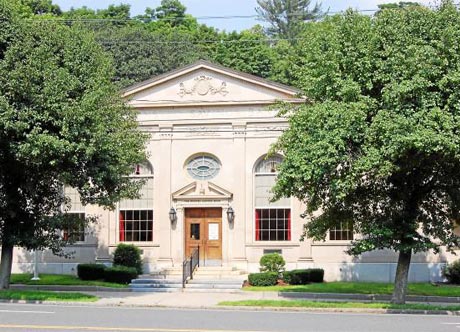On September 26, after more than 50 years spent advocating for consumers, Ralph Nader ’58 will oversee the opening of the nation’s only museum dedicated to law, the American Museum of Tort Law, in Nader’s home town of Winsted, Conn. Through a series of interactive exhibits, mock trials, and its digital presence, Nader hopes the museum will tell the tales of some of the most famous and influential cases in tort law, inform visitors about the role of the jury, and empower individuals to advocate for themselves.
On Thursday, Sept. 10th, Nader visited HLS to deliver a lecture titled, “How the Mighty Harvard Law School Can Leverage The Great Systems of Justice in America.” Before his visit, he discussed why he feels the country needs a museum dedicated to tort law.
What inspired you to create a museum dedicated to law, and specifically tort law?
Tort law has been under severe assault by so-called tort reformers. (I call them tort deformers.) The attack reflects a severe lack of public understanding about tort law, about wrongful injury remedies, about the duty to serve on juries. We have a huge educational challenge here as lawyers, and a museum is an educational institution. There’s a lot of human interest cases and controversies that never reached public attention about when the tort law works, how it provides remedies for wrongfully injured people and holds perpetrators directly responsible, and indirectly discloses a lot of incriminating information to establish safety and health standards and generate deterrence.
VIDEO: On Thursday September 10, the Harvard Law Record sponsored a talk by Ralph Nader, “How the Mighty Harvard Law School Can Leverage the Great Systems of Justice in America.”
What is unique about the function of tort law in our legal system?
Tort law has three functions: compensation, disclosure and deterrence. But the most important aspect that really intrigued me all the way back when I was a law student at Harvard is how refereed and democratic the process is. The plaintiff is wrongfully injured, finds a lawyer on a contingent fee, and then they go to the courts and they file. They don’t have to beg a regulatory agency or a corrupt legislature. They can initiate the process themselves.
The second stage, the trial process, is the most refereed open system of public decision-making of any of our three branches by far. You have the evidence in open court, you have cross examination so both sides are represented, which you often do not have in Congress or regulatory agencies, you have the press there, it’s open to anybody who walks in, you have a jury of peers rendering the facts as they see them, and a judge instructing the jury in the law. Someone wins, someone loses, and the losers can appeal. Everything is on a transcript. Does any other system of public decision-making come close to that?
Why does there need to be civic education on tort law?
There’s an incredibly minimal amount of knowledge among the public. Tort law is the one body of law, even more than criminal law, that touches people in their daily lives in this country. Let’s say people start in high school and learn about the civil justice system. They live in communities, breathe toxic air, are exposed to product defects, are slandered or libeled, might be assaulted. Everybody has these experiences or knows people who have these experiences. Isn’t it a good idea to teach them that if they are wrongfully injured, they have the legal right to take their perpetrator to court? It’s not just up to the state. In the process, they’ll learn about companies having a duty to recall, consumer protection statutes, the role of the court. They might begin supporting larger budgets for the court so justice isn’t rationed. They might be more amenable when they get their jury summons to consider it an honor rather than a drag. Everything follows from that.
What would you want visitors to take away from their experience?

The more people know about the law, the more they will use it, invoke it, defend it, protect it, expand it, and discipline the abuse of raw power. The real purpose of law overall is to restrain, prohibit or channel properly the exercise of raw power. The more people know about the law, the less they will look at it from an alienation point of view, as if it’s them against the law. People have often experienced the use of the law as an instrument of repression. The law was used to legitimize slavery, for heaven’s sake. It was used to ban women from voting. So they have to view the law in a positive, liberating sense, as an instrument of justice.
2015 is also the 50-year anniversary of your book Unsafe At Any Speed, which was widely credited with sparking major safety reforms in the automobile industry What do you think has been the long-term impact of that book?
The effect obviously was extremely gratifying. It launched the modern consumer movement, just like Rachel Carson’s Silent Spring helped spark the environmental movement at that stage. And of course its impact on auto safety has been enormous. When it came out in 1965, the death toll was 5.6 deaths per hundred million miles traveled, and now it’s 1.2. That really reflects hundreds of thousands of prevented deaths and millions of prevented injuries. Death tolls have been reduced not only relatively, but also absolutely. In 1965, there were close to 50,000 deaths a year, and vehicle miles have tripled or more since then. Now it’s down to about 32,000 deaths per year.
